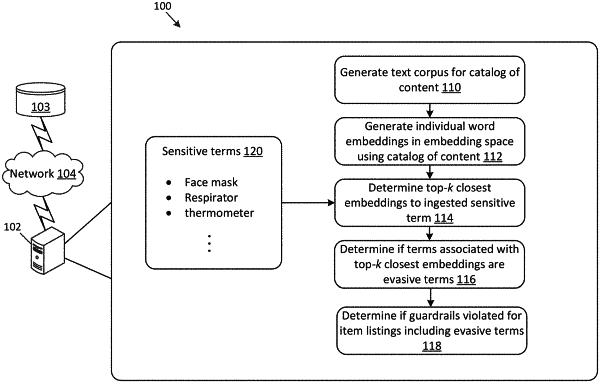| CPC G06Q 30/0185 (2013.01) [G06N 5/04 (2013.01); G06N 20/00 (2019.01); G06Q 30/0201 (2013.01); G06Q 30/0206 (2013.01); G06Q 30/0609 (2013.01); G08B 21/182 (2013.01); G10L 15/183 (2013.01)] | 20 Claims |

|
1. A computer-implemented method to detect evasive text, comprising:
receiving a list of sensitive terms associated with evasive terminology;
determining, by a first machine learning model executed by a first computing device, for a first term of the list of sensitive terms, a first embedding representing the first term in an embedding space;
determining, by the first machine learning model, a loss representing a difference between a predicted text output of the first machine learning model and an expected text output of the first machine learning model;
updating parameters of the first machine learning model using back propagation based at least in part on the loss;
determining a top k closest embeddings in the embedding space to the first embedding;
determining, for a second embedding of the top k closest embeddings, a second term represented by the second embedding, wherein the second term represents a misspelled version of the first term of the list of sensitive terms;
determining a Levenshtein distance between the first term and the second term;
determining that the Levenshtein distance is less than a threshold Levenshtein distance;
determining a set of one or more text listings with a description that includes the second term;
determining if the one or more text listings include data that violates an applicable guardrail; and
generating an alert for text listings that have data violating the applicable guardrail, wherein the alert indicates that an evasive term has been used in the text listings and provides an indication of a potential violation of the applicable guardrail.
|